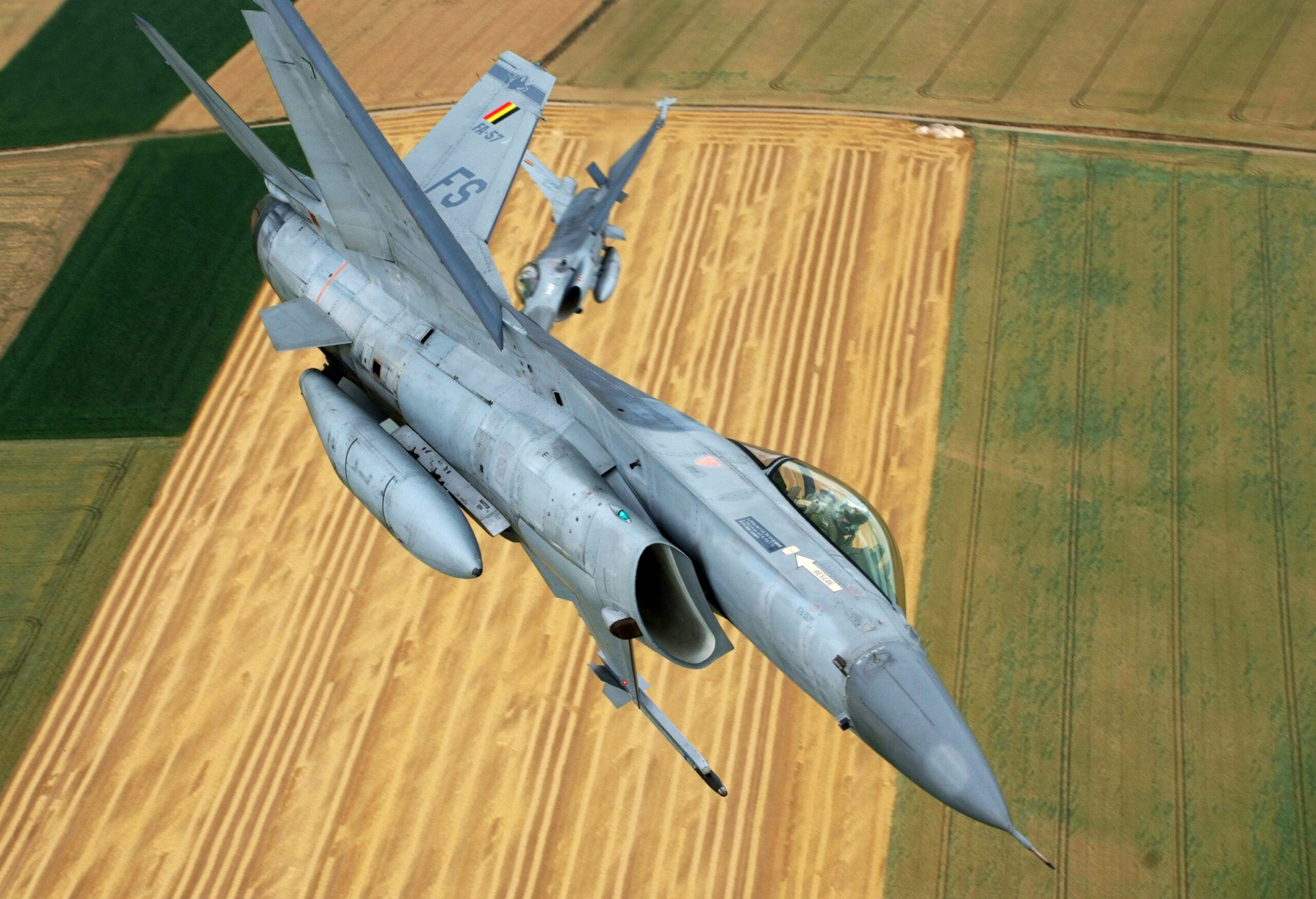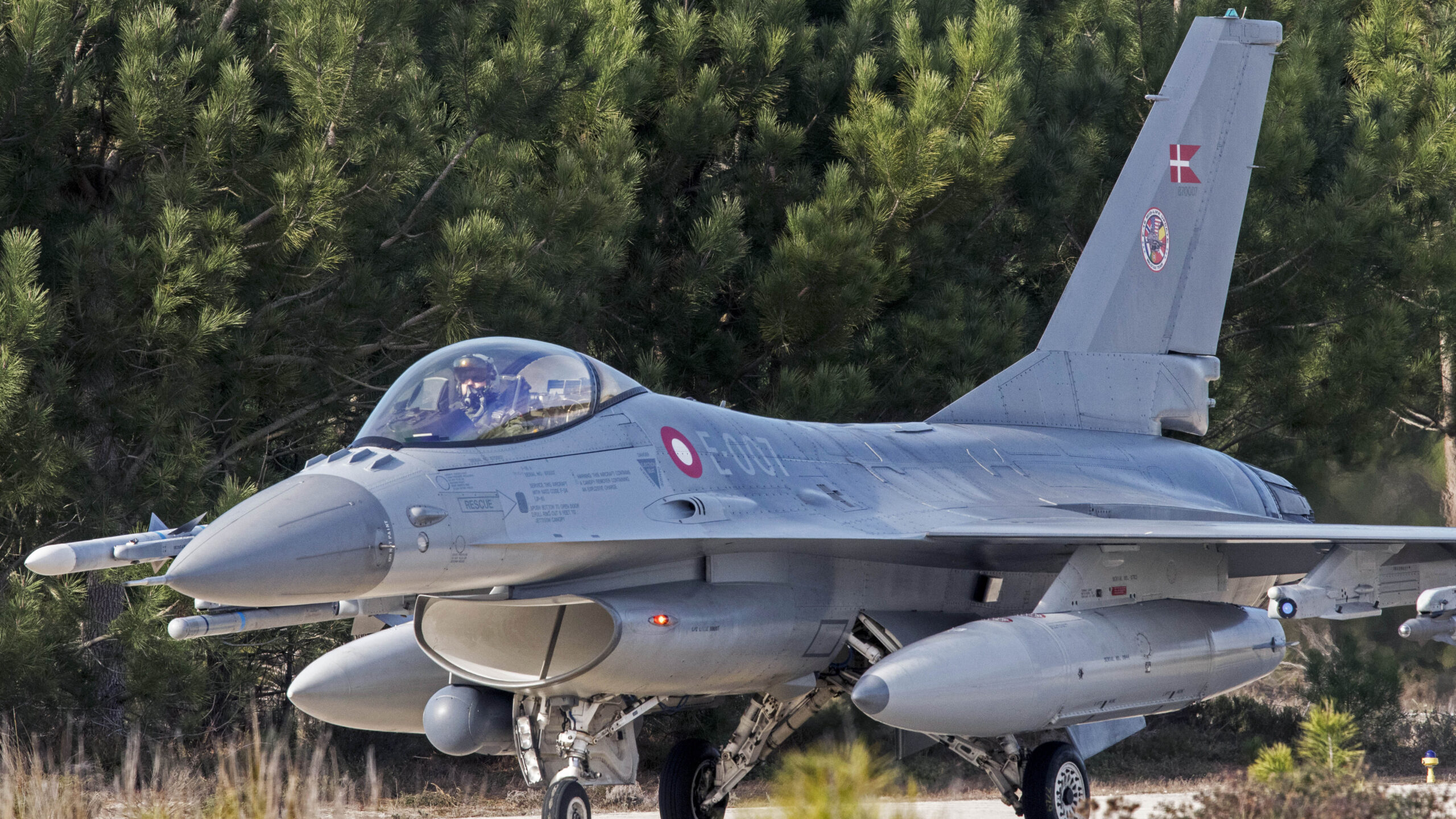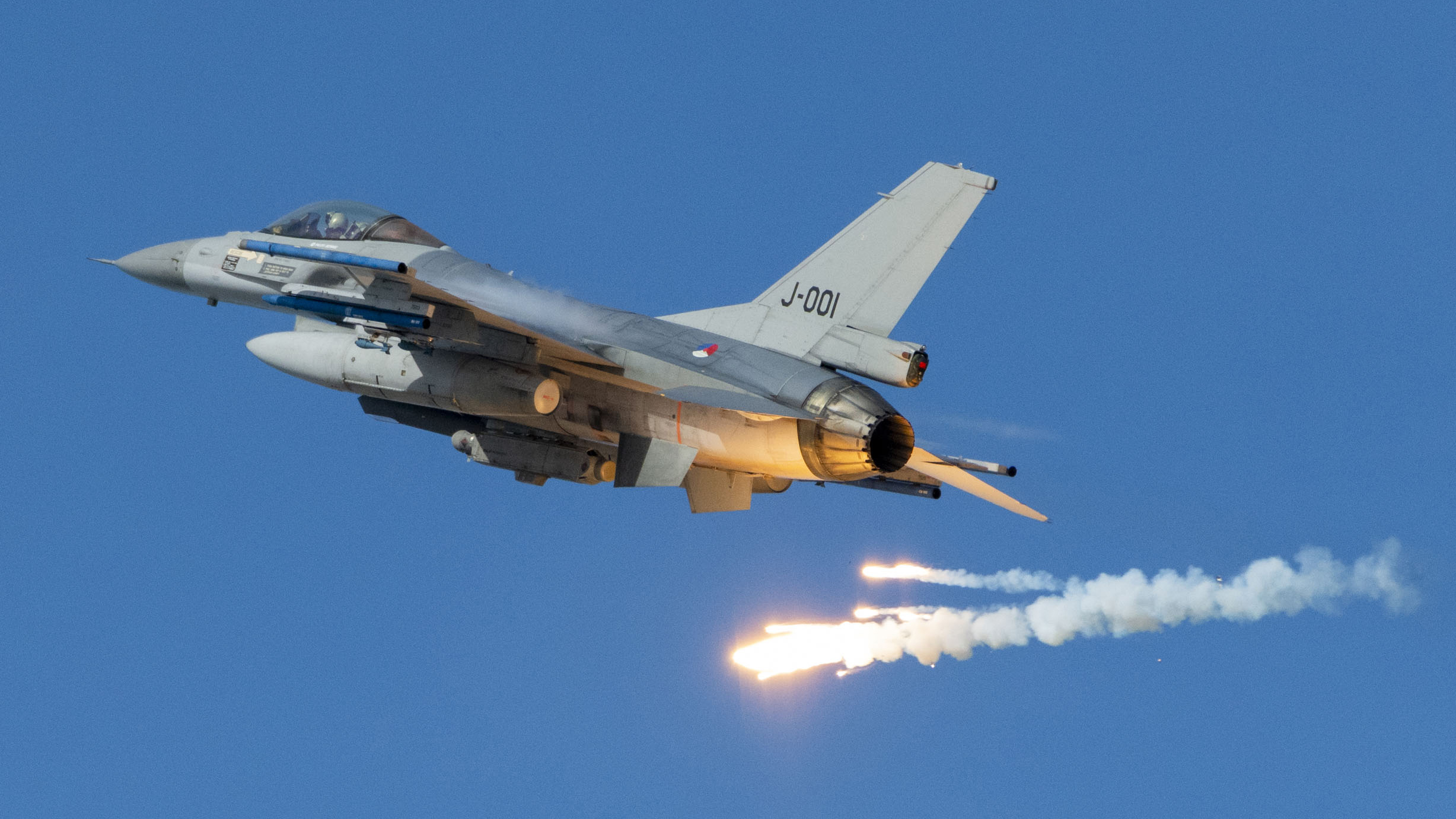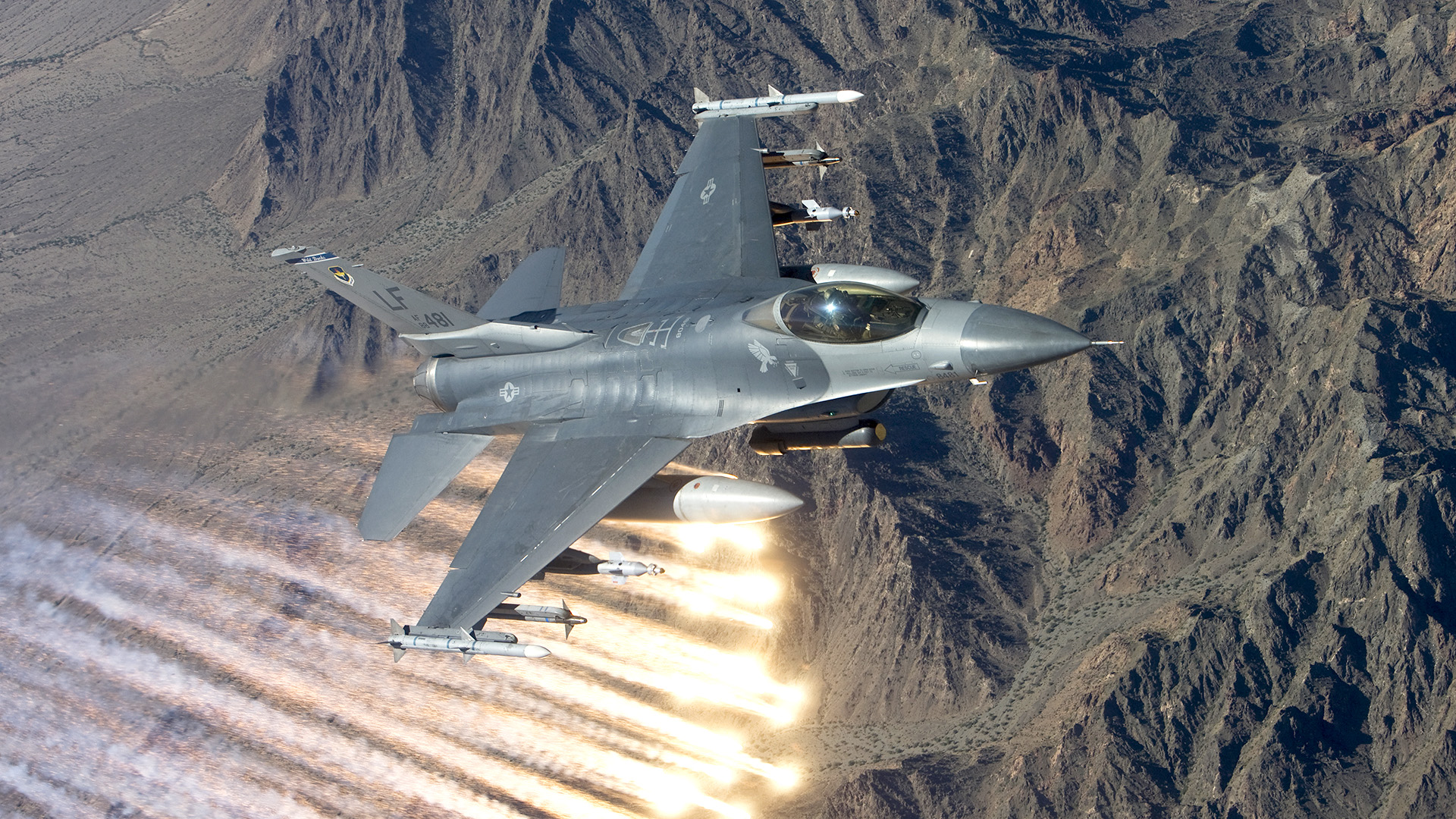After months of requests from Ukraine, as well as pressure from some of its other allies, the United States has now relented and will support Kyiv’s efforts to acquire F-16 fighter jets to overhaul its air force. While a number of European countries have already indicated that they’ll help Ukrainian pilots train to operate the Viper, the source of the actual airframes remains unclear, for now. Nevertheless, with various NATO air forces now in the process of retiring F-16s, there are some potential suppliers for these jets within Europe. The U.S. is also another possible source. The War Zone now looks at the status of NATO’s F-16 fleets and assesses the main options for Ukraine.
Despite speculation from some quarters, the idea of a vast surplus of relatively fresh Vipers is simply not borne out in reality. Ukraine aside, in recent years there has been major growth in demand for F-16s, both new and second-hand, and the United States is already using many of its own retired jets for a number of different purposes. The private sector also has a high demand for F-16s. At the same time, some NATO air forces in Europe are still just getting started, or are about to get started, operating the F-35s that will eventually replace their F-16s, meaning Vipers are still needed there, too. Other NATO members have just stood up second-hand F-16 operations. So this is something of a low period for used F-16 availability, and that isn’t even factoring in the condition of the airframes that will become available in the not-so-distant future.
With that being said, it’s worth looking at where we are now in the saga of F-16s for Ukraine.
The latest development was announced by President Joe Biden, speaking after the G7 meeting in Japan on May 19. In a reversal from his previous stance, Biden said he would help secure modern, fourth-generation Western fighters for Ukraine. Among the possible types, the F-16 has long been the front-runner, for multiple reasons, not least its relative availability. Biden named it specifically.
“The United States together with our allies and partners are going to begin training Ukrainian pilots on fourth-generation fighter aircraft, including F-16s,” Biden told reporters, “to strengthen Ukraine’s Air Force as part of a long-term commitment to Ukraine’s ability to defend itself.” Biden added that he had received “a flat assurance from [Ukrainian President Volodymyr] Zelensky that they will not use it to go on and move into Russian geographic territory.”
The previous U.S. position was based on the perceived escalatory nature of providing Ukraine with advanced fighter jets, encapsulated in the scenario of potential F-16 attacks on Russian Federation territory, as well as the practical difficulties of realizing such a transfer, especially in terms of the training burden and overall costs.
Additional impetus to get Washington to approve the transfer of F-16s appears to have come from the Kingdom and the Netherlands, in particular, with a meeting last week between the leaders of the two countries. According to a U.K. government statement, the two countries “agreed they would work to build an international coalition to provide Ukraine with combat air capabilities, supporting with everything from training to procuring F-16 jets.”
While Biden’s statement doesn’t specifically refer to sourcing F-16s for Kyiv, it’s hard to see why the United States would back a training effort tailored for this particular jet without also approving the transfer of the same aircraft for the Ukrainian Air Force. That certainly seems to be the long-term aspiration outlined by Biden.
The F-16 training initiative is something that has gathered serious momentum in recent weeks, with the United Kingdom, the Netherlands, Belgium, and Denmark all having indicated that they were willing to participate. Notably, the United Kingdom is not an F-16 operator but says it will still provide relevant training, while Belgium has said that it can offer training but not actually transfer any Vipers (for now, at least).
There is no timeline at present to get F-16s to Ukraine, but an unnamed White House senior official indicated that the training process would take “months.”
“This training will take place outside Ukraine at sites in Europe and will require months to complete,” the same administration official said. “We hope we can begin this training in the coming weeks.”
In the past, the outgoing U.S. Under Secretary of Defense for Policy Colin Kahl said that it might take 18-24 months for Ukraine to field second-hand F-16s. There have been plenty of other differing predictions, based on the type of training that might be provided, in turn, linked to the level of proficiency of the Ukrainian pilots chosen for the F-16 course.

For example, a leaked U.S. Air Force assessment conducted earlier this year argued that Ukrainian fighter pilots could be trained in the basic operations of F-16s in around four months, something that we reported on at the time.
Meanwhile, an experienced F-16 instructor told The War Zone that a pilot with around 500 hours of experience in a Western fighter would need “69 days to learn everything to safely employ the Viper in air-to-air and air-to-ground roles.” Most Ukrainian pilots don’t have experience in Western jets but, again, a special syllabus could be provided that focuses on the specific skills they will require in theater, as well as the key fundamentals of switching from a Soviet-era fighter to an F-16. However, these 69 days would only apply to converting already experienced aviators; the process of training a Ukrainian pilot from scratch would still take between six and 12 months, according to the same instructor.

Regardless of where the F-16 training will take place (although Belgium seems to be one likely candidate, based on previous announcements), and how long the process might take, the search now appears to be on for Vipers available for transfer to Ukraine, sooner rather than later.
The main candidates for supplying F-16s to Ukraine, as it presents stands, are as follows:
Belgium
Belgium has already announced that it’s able to train Ukrainian pilots to fly F-16s, although it has also said it can’t transfer any F-16s to Ukraine — for the time being.
“We have said that we cannot supply aircraft, but we can train pilots,” an announcement from the cabinet of Belgian Prime Minister Alexander De Croo stated, according to a recent report that was published in the country’s De Morgen newspaper.
No details have been provided about the kind of training Belgium is able to offer Ukraine, but it seems clear that it would involve converting Ukrainian pilots to fly the F-16. With an enormous amount of experience with the type and a reduced requirement to train new F-16 pilots of its own, Belgium would appear well-placed to provide this kind of training.

Belgium will eventually replace its F-16s with the F-35A stealth fighter, although deliveries are not due to begin before the end of the year.
For this reason, Belgium wants to retain its F-16s, which, in the meantime, remain its sole combat jet.
The Belgian Air Force currently flies around 50 F-16s, which have been upgraded to F-16AM/BM standard, making them broadly equivalent to the more advanced F-16C/D Block 50/52. Under the Mid-Life Update (MLU) program, the jets received an upgraded AN/APG-66 radar, a new modular mission computer, targeting pods, datalinks, GPS, night-vision goggle compatibility, and new precision-guided weapons. Improvements have continued to be introduced via successive common software ‘tape’ updates.

Similarly upgraded Vipers are also operated, or have been operated, by the other European Participating Air Forces (EPAF) countries: Denmark, the Netherlands, Norway, and Portugal. Notably, and despite their age, these jets offer a significant multirole capability, something that Ukraine is also looking for as it increasingly seeks opportunities to launch counteroffensives against Russian forces within its borders.
As to when Belgium might have F-16s available to transfer to Ukraine, that seems like it could be a long time off.
Although the first Belgian F-35 is due to be delivered this year, the first eight aircraft will remain in the United States to be used for training at Luke Air Force Base in Arizona. The first F-35s will only arrive at Florennes Air Base in Belgium in 2025 and initial operating capability is not expected until mid-2027.
In the meantime, older Belgian F-16s are being withdrawn as they reach their flight-hour limits, making the retention of the remaining aircraft even more critical. Those airframes in storage likely require service life extension upgrades and some may have been parted-out to support the existing fleet. Belgium’s sale of second-hand F-16s to Chile and Jordan also decreased any available aircraft that could be transferred in any condition.
Therefore, unless there’s a significant policy change in Brussels, it seems as though it’s not currently in a position to offer significant amounts of F-16s. Although that may still change in the weeks and months to come, such a move would bring inevitable stresses and strains on the Belgian Air Force but that could be mitigated by external help.
Denmark
Like Belgium, Denmark is gearing up to replace its F-16s with F-35s.
During a visit to Ukraine in April, Troels Lund Poulsen, Denmark’s acting defense minister, confirmed that his country, together with its allies, would decide “before the summer” as to whether they will provide Ukraine with F-16s. Poulsen said the matter was under discussion but that the process was taking a long time due to the requirement for different countries to cooperate on any such transfer of aircraft.

“Denmark will not do it alone,” Poulsen said, adding that a decision was still achievable “in the near future.” He said: “We need to do this together with several countries. We will also have a dialogue with the Americans about this.”
Those conditions would appear to have been met, thanks to movement on the F-16 issue in the Netherlands and the United Kingdom and the apparent green light from Washington.
As to how many F-16s Denmark might be able to provide, this is unclear but will be determined by current demands within the Royal Danish Air Force. According to figures from Flight Global, the Royal Danish Air Force currently operates around 43 F-16s but these are its sole combat jet. Although Denmark may well retain other airframes in storage, these would require more work to prepare them for transfer to Ukraine.
While Denmark received its first F-35 in April this year, this aircraft was delivered to Luke Air Force Base for training. The first F-35 operations in Denmark are slated to begin this year. Although it will be some time until initial operating capability, the pending arrival of the stealth jets in Denmark should help to relieve the burden on the F-16 fleet and help free up airframes for Ukraine. As its stands, the number of F-16s that Denmark potentially has available would seem to put it in a particularly favorable position as regards transferring at least some of those jets to Kyiv.
Netherlands
Compared to Belgium and Denmark, the Netherlands has made more rapid progress in replacing its F-16s with F-35s. Currently, the remaining Royal Netherlands Air Force F-16s are located at a single base, Volkel, where the local frontline fleet was reportedly reduced to just 24 aircraft last summer.

In January this year, the Dutch Deputy Prime Minister and Minister of Foreign Affairs Wopke Hoekstra said that his government would look at any request to transfer its F-16s to Ukraine with an “open mind.” However, Dutch Prime Minister Mark Rutte then significantly walked back Hoekstra’s comments.
Dutch plans seem to have changed again, more recently, with the meeting between Rutte and his British counterpart Rishi Sunak. Rutte has also said there are “no taboos” and that work is being done “intensively” to get Vipers into Ukrainian hands.
Additional Dutch F-16s were available, until recently, in the United States, where 10 examples had been assigned to the Arizona Air National Guard’s 162nd Fighter Wing for training Dutch crews. With the training effort ended, the adversary air contractor Draken International signed a 2021 contract to purchase 12 Dutch F-16s, including those that had been based in the United States.

The fate of the agreement with Draken remains unclear, but it appears that the company, despite some flight testing from its base at Lakeland, Florida, has not formally taken delivery of the aircraft. Rather than remaining in the United States, last December, six of the jets returned to Belgium, where they are expected to be overhauled.
There are now rumors that those F-16s may be transferred to Bulgaria, which is seeking a stopgap fighter while it waits to receive new-build F-16 Block 70s from the new production line in South Carolina. It’s conceivable, however, that these aircraft could also be transferred to Ukraine, although the apparent requirement to overhaul them would affect when they might actually become available. That would appear to leave the approximately 24 jets still in the Netherlands as the best candidates for Ukraine, although their availability will also depend upon continued F-35 deliveries and the operational readiness of that aircraft and its pilots. However, with a final Dutch squadron scheduled to convert to the F-35 next year, the timeline for potential F-16 deliveries to Ukraine looks generally promising.
Norway
Ahead of other European F-16 operators, Norway has entirely withdrawn its fleet of Vipers thanks to the relatively rapid pace of F-35 deliveries, the last examples being retired in early 2022. Norway is one of the biggest European customers for the Joint Strike Fighter, with 52 examples on order.

While Norway received 74 Vipers, only 56 of these were updated under the MLU program. Of these, 32 aircraft are being transferred to Romania where they will replace that country’s recently retired MiG-21 LanceRs. Up to 12 Norwegian F-16s were also acquired by Draken International, under a deal you can read about here, although its current status is unclear, especially with the U.S. military requirement for adversary air apparently drying up.
Presuming the Draken deal for ex-Norwegian jets also goes through, that would leave only a dozen or so F-16s available to Ukraine, although even this number would surely be eagerly accepted. In their favor, the Norwegian jets are widely considered to be among the best-maintained F-16s within the NATO inventory and would very likely require very little in the way of refurbishment prior to delivery.
The outsiders
Five other NATO nations in Europe operate the F-16, although all of these plan to retain these aircraft long-term and some are continuing to receive Vipers as well as undertake significant upgrades to their existing inventories.
In Eastern Europe, Poland was linked with a possible transfer of F-16s to Ukraine back in January, although reports emanating from Ukraine were quickly quashed by Polish officials.

Vice-Chairman of the Polish National Defense Committee, Pawel Krutul, pointed out that transferring F-16s rather than MiG-29s, as was previously planned, would have a degrading effect on the Polish Armed Forces. Wojciech Skurkiewicz, Secretary of State in the Polish Ministry of National Defense responded in agreement, stating: “There is no question of handing over Polish F-16s.”
Not surprisingly, Warsaw elected to transfer MiG-29s to Ukraine, rather than give up any of its F-16s, which are among the most recent and most capable in Europe, the 48 F-16C/D Block 52+ jets being delivered between 2006 and 2008. Any near-term transfer of these notably advanced jets must be considered extremely unlikely, especially as Poland transfers MiG-29s and prepares to retire its aging Su-22 Fitter attack jets, among many other factors.

Photo by Stringer/Anadolu Agency via Getty Images
The other F-16 operator in Eastern Europe is Romania, which is also the most recent country within NATO to get its hands on the jets.
Romania has been gradually building its F-16 fleet, receiving a batch of 12 second-hand jets from Portuguese stocks, followed by another five from the same source, and finally agreeing to buy 32 from Norway. With the Romanian MiG-21 LanceR fleet now withdrawn, the F-16 is the sole combat jet operated by the country. While the airframes may be old, they represent new and advanced equipment for Romania, which occupies a strategic position on NATO’s Black Sea frontier, as well as bordering Ukraine. A transfer of some of these jets to Ukraine seems a remote possibility, especially as momentum is only now starting to gather for a possible F-35 purchase.

As for Portugal, this country has already begun to reduce its F-16 fleet, with the aforementioned transfers to Romania. However, and in contrast to most other NATO F-16 operators in Europe, Portugal is yet to decide on a successor to its Vipers. It’s therefore highly likely that the country will seek to retain its 25 remaining F-16s for the foreseeable future.
Finally, Greece and Turkey possess the largest F-16 fleets in Europe but are also probably the least likely to give any examples up, any time soon.
Greece received 170 F-16s of various types between 1989 and 2010 and, with a large-scale modernization program underway, the Viper will remain the backbone of the Hellenic Air Force for many years to come. Roughly 150 Greek Vipers are still operational, of which 84 aircraft — more capable Block 52+ and Block 52+ Advanced jets — are being brought up to Block 70/72 standard. This includes the AN/APG-83 Scalable Agile Beam Radar (SABR) with active electronically scanned array (AESA) Raytheon Modular Mission Computer.

Greece’s oldest F-16 Block 30s have undergone the Falcon UP service-life extension and there have been suggestions in the past that they could be sold off, or perhaps used as aggressors for air-to-air training. However, Greece has hardly played a prominent role in delivering arms to Ukraine since the full-scale Russian invasion and a transfer of F-16s would be very surprising.
Turkey, Greece’s regional rival, is the world’s third-largest Viper operator, with a total of 270 aircraft delivered in successively more capable Block 30, Block 50, and Block 50+ configurations. Turkish F-16s have been subject to the Common Configuration Implementation Program (CCIP) upgrade, adding more sophisticated weapons and sensors and these jets remain the core of Turkey’s combat fleet. Around 245 of the jets remain in use and Turkey has chosen to upgrade 35 of its oldest Block 30 jets, reflecting their continued importance. As well as ongoing upgrades, there have been repeated reports that Ankara might also seek to buy another batch of new F-16s from the United States. Meanwhile, with Turkey having been ejected from the F-35 program, retaining its F-16s becomes even more important, at least until the homegrown TF-X fighter jet can be fielded.

With tensions between Greece and Turkey an ever-present factor in the eastern Mediterranean, neither of these countries can be considered a likely candidate to provide F-16s to Ukraine, despite the relatively large fleet sizes operated.
Taken together, it’s clear that even those countries that have expressed willingness to provide Ukraine with F-16s cannot, individually at least, provide significant numbers of the jets, and especially not at relatively short notice.
With that in mind, a coalition effort appears to make much more sense, with different nations pooling smaller numbers of jets. Denmark and the Netherlands currently seem like the leading candidates, but Norway, and the status of its ready for sale F-16s, remains a wildcard too.
This arrangement would present certain logistical problems in that the aircraft wouldn’t necessarily all be to the same standards. However, the Ukrainian Air Force has shown considerable ingenuity in the past, in terms of operating disparate types amid considerable logistical challenges, so this certainly wouldn’t be an insurmountable problem.
Finally, there remains the option of sourcing F-16s from the United States, something that would have been seen as very unlikely only a few days ago.
Now, however, it’s notable that Secretary of the Air Force Frank Kendall has not discounted the idea of transferring F-16s to Ukraine from U.S. stocks. When asked about that possibility today, Kendall replied: “I don’t know… there’s a lot of possibilities.”
The Pentagon’s boneyard could ultimately be a source of F-16s for Ukraine, although most of the jets there would require considerable refurbishment to be made flyable, let alone brought up to the kind of standard as the F-16AM/BM jets as used by European NATO operators. On the other hand, the flow of recently withdrawn Vipers to the boneyard could potentially yield some windfalls for Ukraine, for example, the 22 Block 25 F-16s previously operated by the U.S. Air Force’s 309th Fighter Squadron at Luke Air Force Base, before their retirement last year.
Even these jets, though recently retired, would likely still require some extensive modifications. After all, these were the oldest jets remaining in the Air Force aside from a handful of Block 25s operated by the Nellis aggressors. In the words of the squadrons’ director of operations, the jets “hadn’t been upgraded for over a decade.”

The program to convert boneyard F-16s into QF-16 Full-Scale Aerial Targets (FSAT) has now come to an end but consumed a lot of available airframes. Other U.S. military requirements are also increasing the demand for F-16s, however, such as the U.S. Navy taking recently retired examples to outfit a newly equipped adversary squadron, VFC-13. On the positive side, Air Force and Air National Guard units, such as those flying Block 30 models, continue the process of converting to the F-35, potentially releasing more Vipers to Ukraine or other operators.
Once again, while the boneyard in Arizona might look like a good place to start looking for F-16s for Ukraine, the reality will be a good deal more complicated, even providing that the U.S. government were to authorize such a move. But, as we have seen before in the provision of weapons to Kyiv, where there’s a will, there’s a way. And Ukraine will be almost certainly eager to get its hands on whatever F-16s become available quickest.
Finally, there are many international users of F-16s beyond NATO, but none really seem suited for offloading usable airframes at this time. Of course, that could change with some pointed negotiations with Washington, although this seems like a very unlikely possibility considering the sensitivity of the topic and that this is so far a NATO-only effort.
It would be an irony, certainly, if the first F-16s that do find their way to Ukraine come direct from U.S. stocks after the government resisted such a transfer for so many months. But stranger things have happened in this conflict, and the possibility shouldn’t be ruled out entirely.
Update: Reports in the Dutch press have been brought to our attention, which provide more insight into the numbers of F-16s the Netherlands potentially has at its disposal for transfer to Ukraine, or elsewhere.
According to a recent report in the Dutch newspaper de Volkskrant, in addition to the 24 F-16s in regular use, and the 12 sold to Draken, there are another 18 jets not in use. However, according to the Dutch national accounting office, these aircraft are maintained for operational use as required and are actually rotated with the frontline aircraft to reduce flight hours per airframe. This would suggest that the Dutch have as many as 18 F-16s that would be more or less ready for transfer to Ukraine (albeit with an impact on the availability and fatigue life of the remaining frontline pool of jets). These jets are also understood to be upgraded to the same standard as the frontline F-16AM/BM jets.
Contact the author: thomas@thedrive.com

